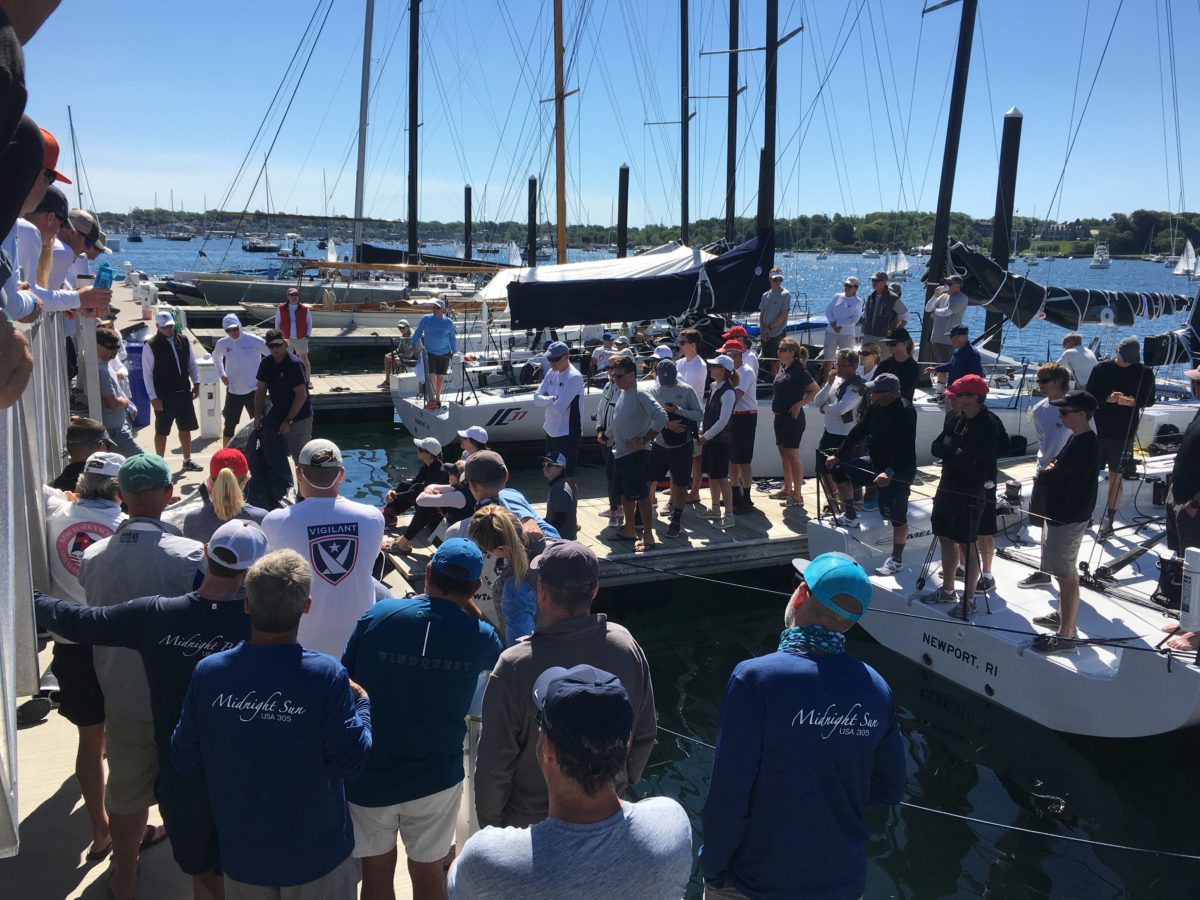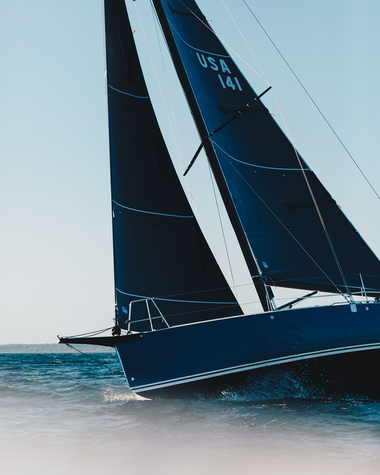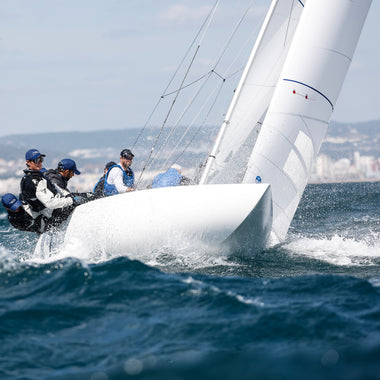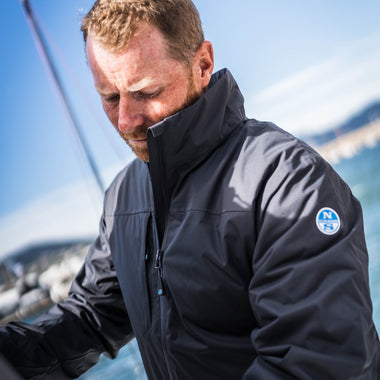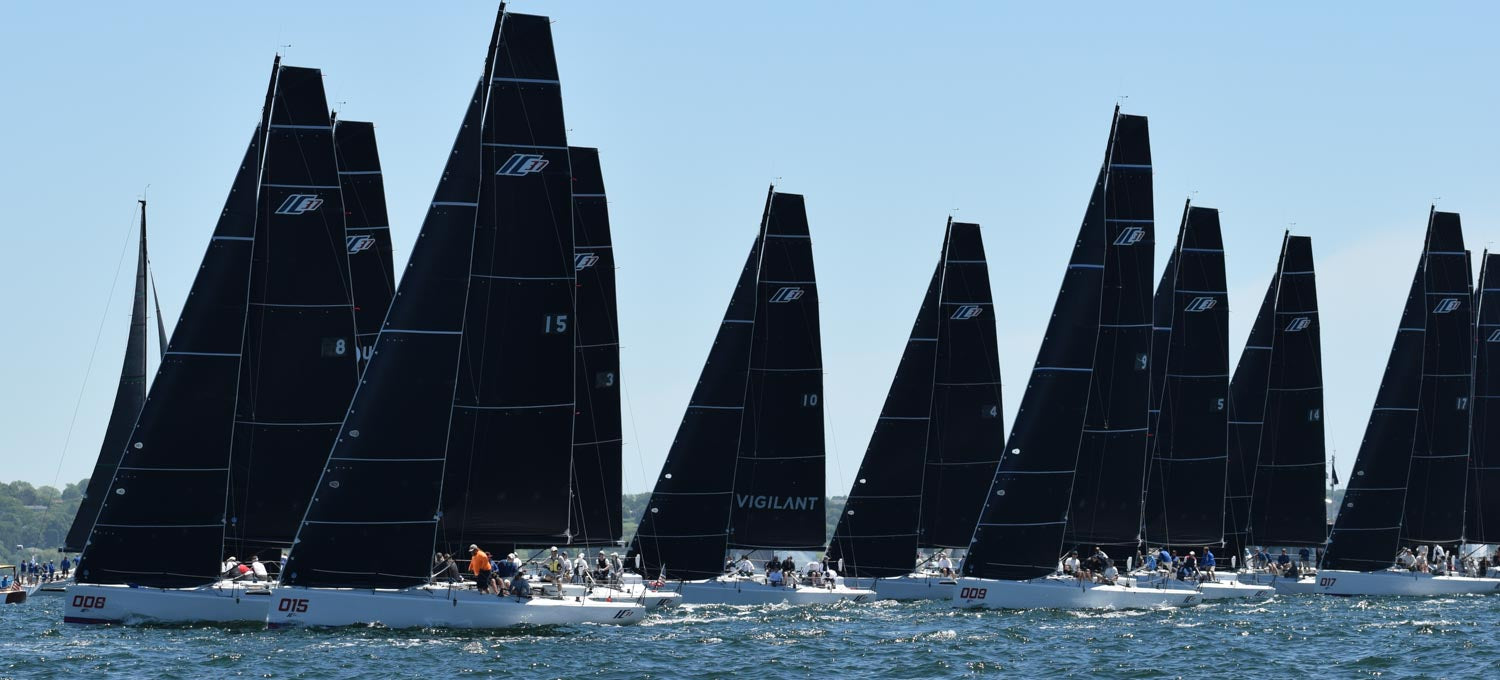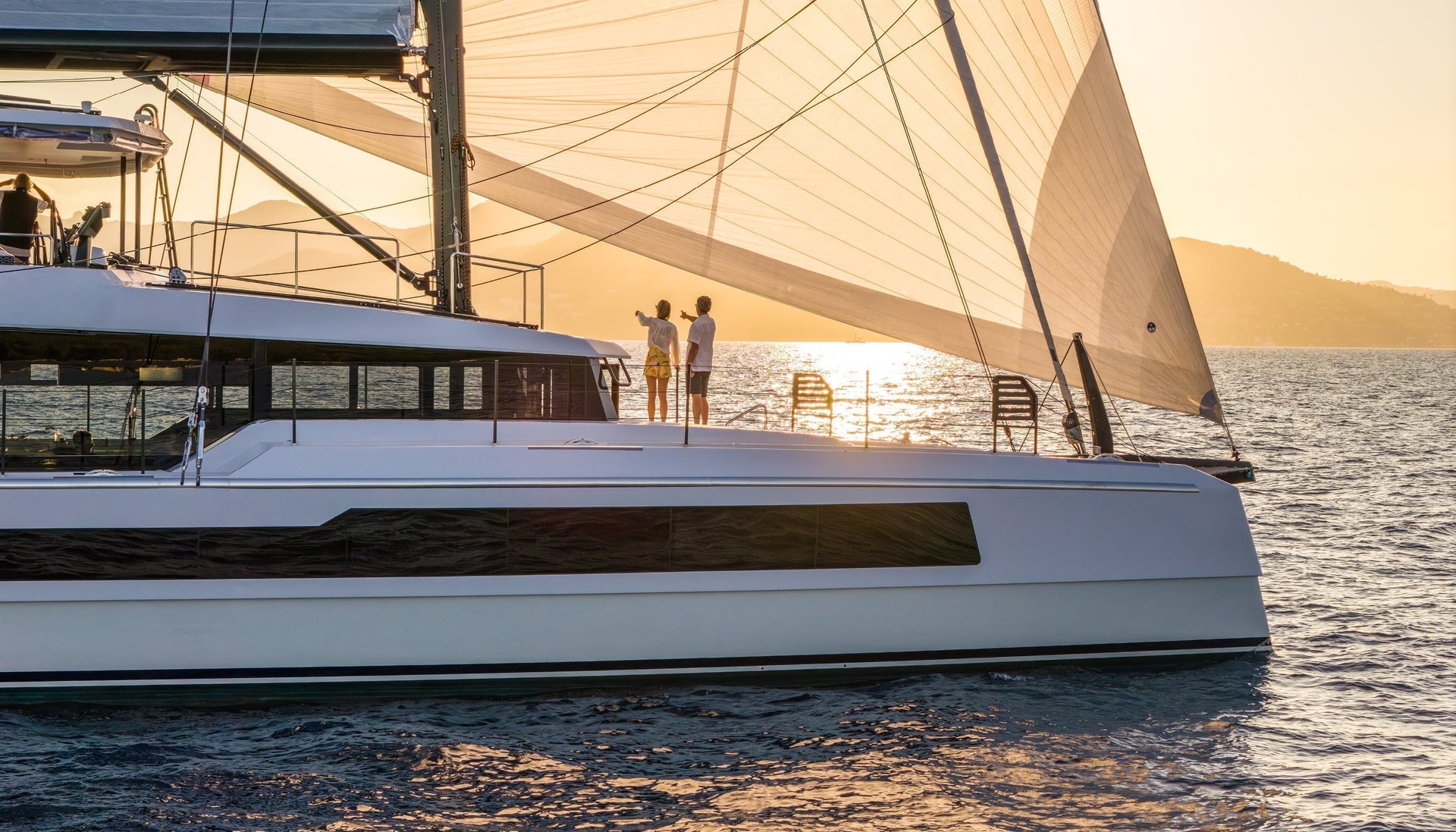MELGES IC37 TIPS: VOLUME TWO
MELGES IC37 TIPS: VOLUME TWO
What We Learned at The Leukemia Cup
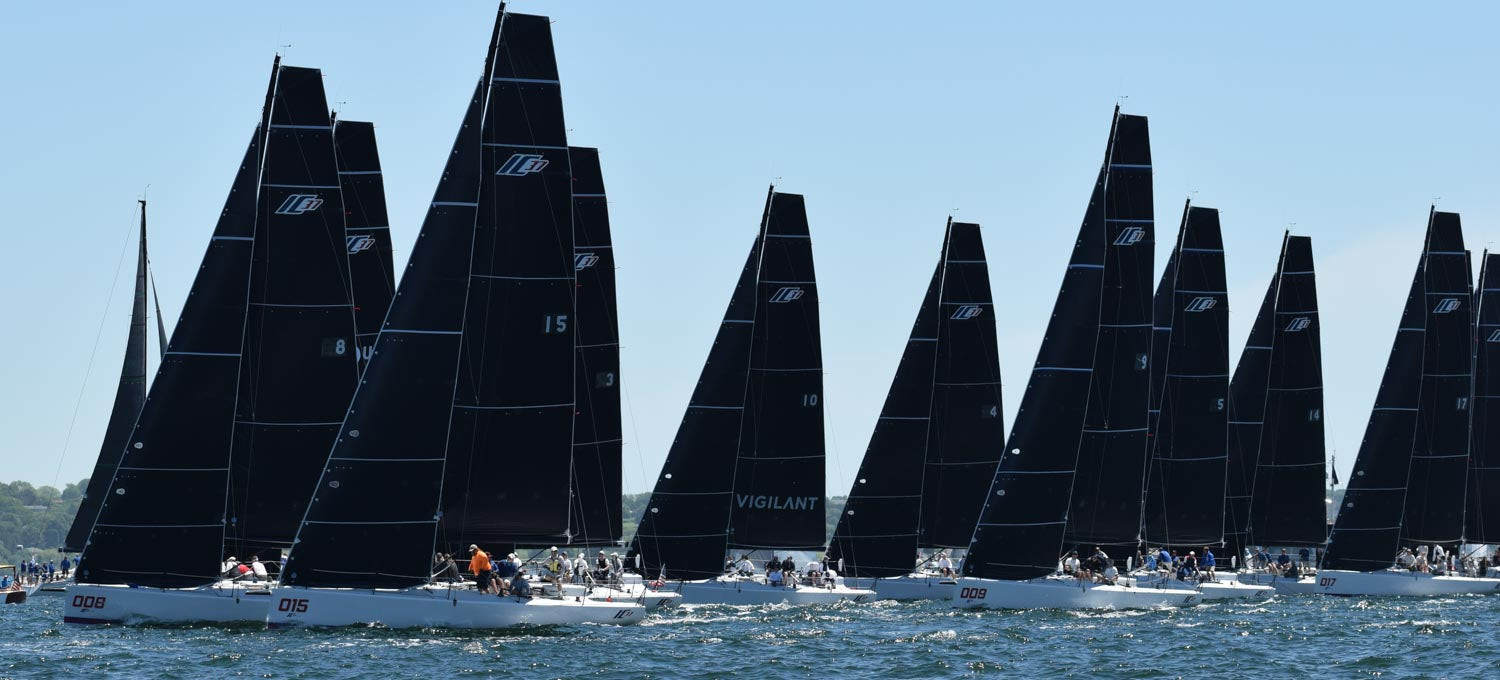
It can’t get more exciting than this for the Melges IC37 fleet and the New York Yacht Club members. All nineteen teams lined up for the Leukemia Cup for their first “official” regatta. Congratulations to Cory Sertl and Peter Denton’s Das Blau Max for crossing the finish line first.
As the teams figure out the boats, we noticed that the gap between mid-fleet and podium performance is small and getting smaller. Small improvements can make all the difference and means minutes off the course. Here are the takeaways from our experts Ken Read, Kimo Worthington and North U Bill Gladstone:
Spinnaker Sets
The jib is fairly large compared to the spinnaker size which makes it hard to set the spinnaker due to backwind from the jib. Mark the spinnaker halyard with a piece of tape so the mast person pulling up the halyard knows when they have “rung the bell”. As soon as the mast person says “made”, in light air under 10 knots TWS, the jib halyard is released immediately and completely, un-cleating the jammer and smoking the luff down the headstay to get the kite to fly properly, but not before the mast person says “made”. In over 10 knots TWS, a complete release of the jib sheet on the “made” call will ensure that the kite fills properly and immediately. Then, trim in the jib slightly if your intention is to use it as a staysail. And keep in mind, under 10 knots for sure is too light for a jib staysail. 10-12 is marginal. Over 12 is likely.
Jib Trim
“I personally think that the jib track starts all the way inboard and only moves out when the mainsail starts too luff due to excess backwind,” explained Ken Read, Melges IC37 Guest Coach & North Sails President. “I didn’t see many with the car all the way in yesterday. I raced in with a boat in the final race with the long upwind leg and found our boat to be quite fast with the car all the way in.”
Due to the shape of the cockpit, the jib trimmer when trimming to leeward, sits well outboard from the clew of the jib. This makes an optical illusion for the jib trimmer as the lower part of the jib is very round and looks to literally be pointing back towards the middle of the boat. That is actually not the case. The lower leech of these jibs is quite open to allow for the jib to be sheeted quite far inboard so take advantage of the lead positioning and keep trying to sneak it inboard.

Runners During Tacks
In fresh breeze, with the runners loaded hard, it pays to trim the new runner on before the old runner is eased – the goal is to transfer the runner load rather than ease one side and reload the other side. This requires that the tactician loads and grinds the new runner before the helm goes down, as the old runner needs to be eased promptly as the bow goes through the wind. (When it is windy enough to require this, there should be at least two crew behind the driver – usually tactician and floater.
Marking the runner with tape near where the line goes around the winch at max load helps to keep the runner trimmer’s head down grinding instead of looking up at the main to see how much is on.
Halyard
Play with the controls, constantly. Jib halyard tension directly affects shape and often it is an overlooked control as the breeze picks up or dies down. Keep the cabintop winch loaded with jib halyard when going upwind to allow for fine tuning as velocity shifts happen – clutch stays open. On final approach to windward mark, the pit person closes clutch, swings legs in, transfers load from cabintop winch to clutch and preloads cabintop with spin halyard ahead of hoist.
Mainsail Trim
In light air carrying the boom just above centerline allows for a proper twist profile without having the main fall into the jib. Don’t get carried away with this. A boom width above center seems to work; up near the runner is too much. Unless running very deep, actively trim main when reaching. It is very easy to ease too far out and lose any advantage from a properly trimmed main.
Spinnaker Drops, Step By Step
Timing is everything, clear actions are everything else. First step: put your strongest person on the takedown line, ready to go in the cockpit. Second step: if you have an extra body, someone down below acting as squirrel forward and to starboard helps to gather the sail down below (faster and cleaner douse). Third step: a decisive turndown to unload kite should be timed at the exact instance when a douse happens. Blow sheet and halyard while takedown line is being hauled; all load is now out of sail and belly is aimed at the hatch. When foot and belly is under control, blow the pole while bow team is gathering tack – this helps bring pole in. When all under control, finally blow the tack. Pole should be in, tack following suit.
Your resource page for the IC37 by Melges
